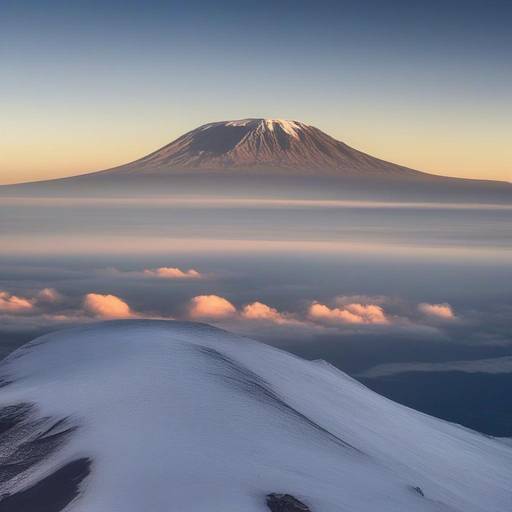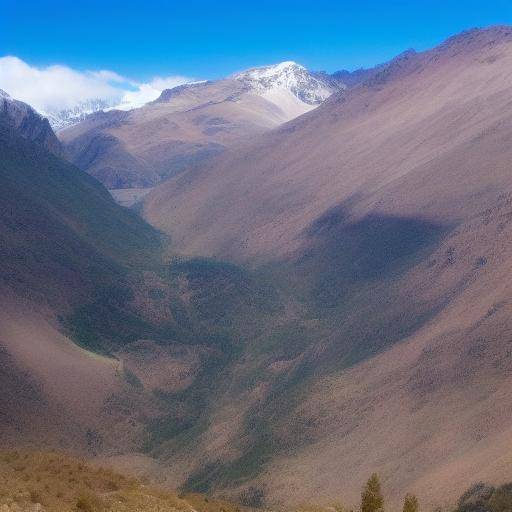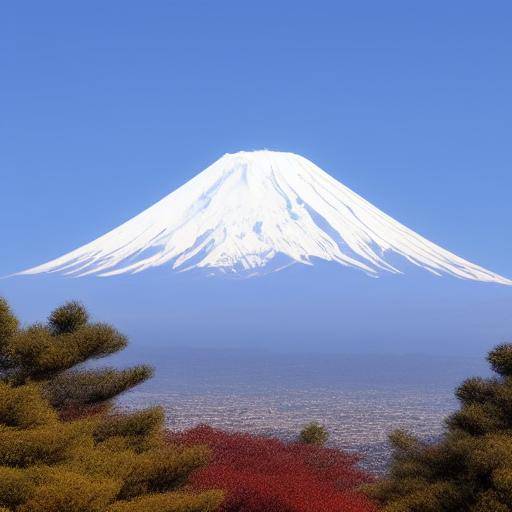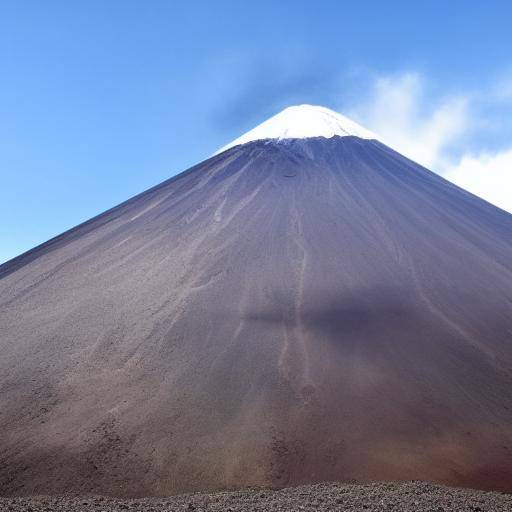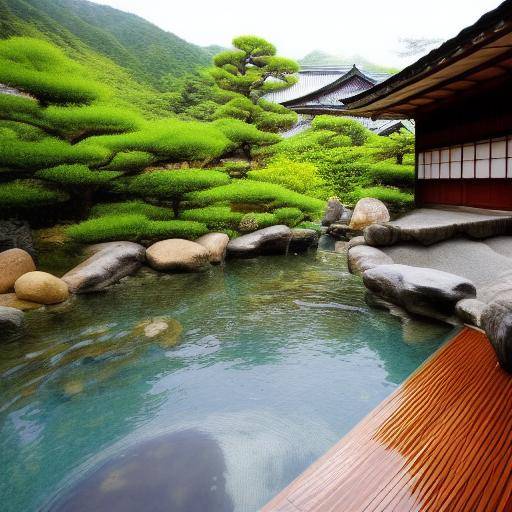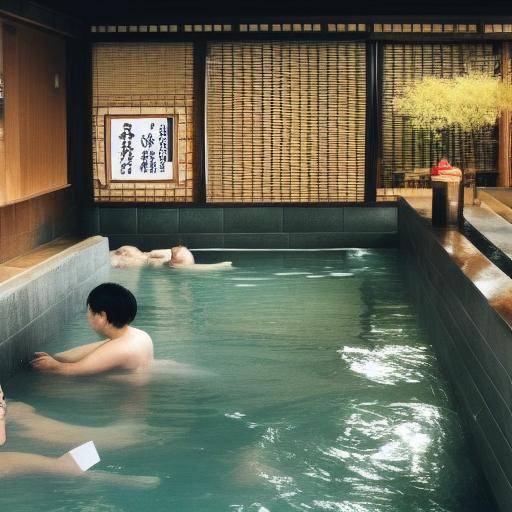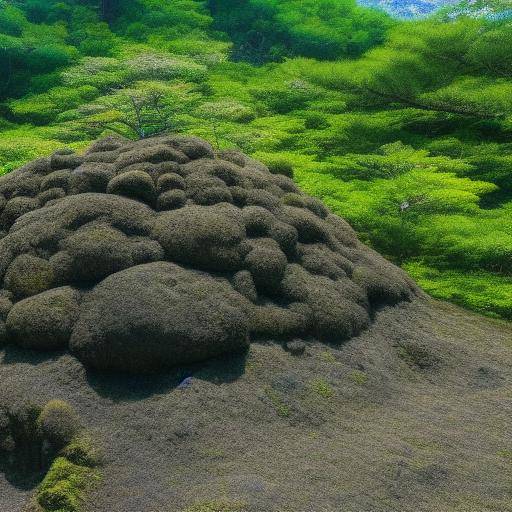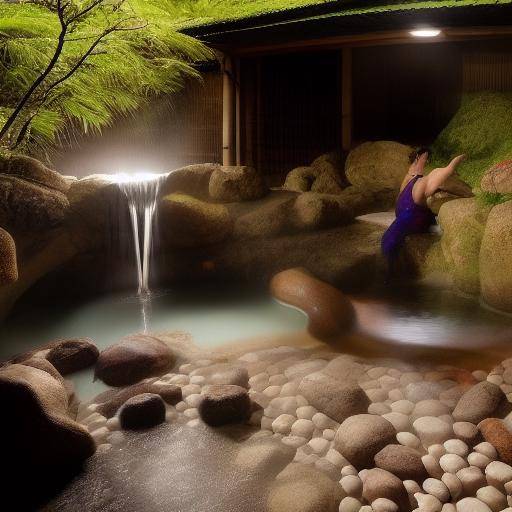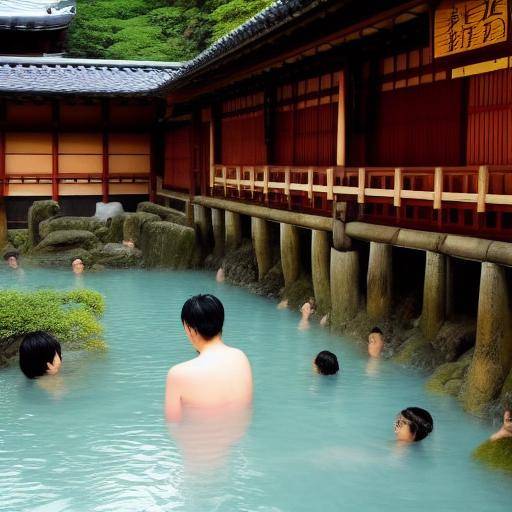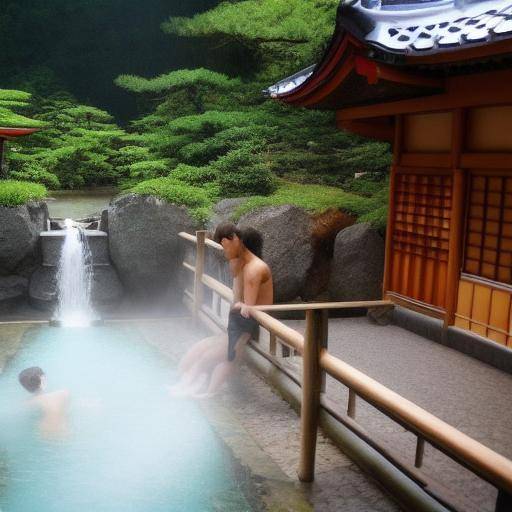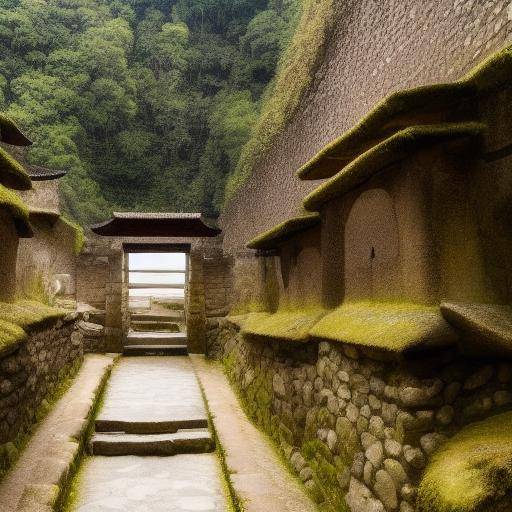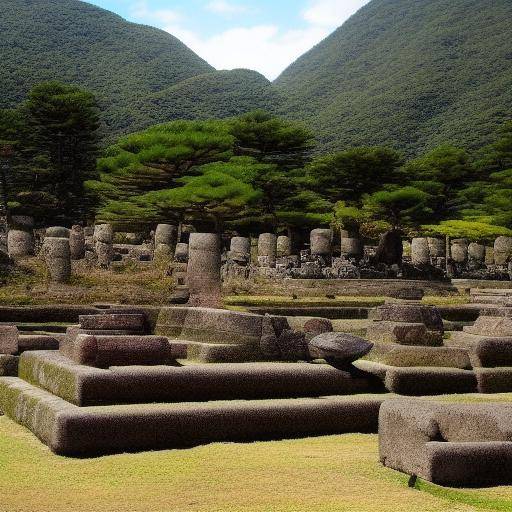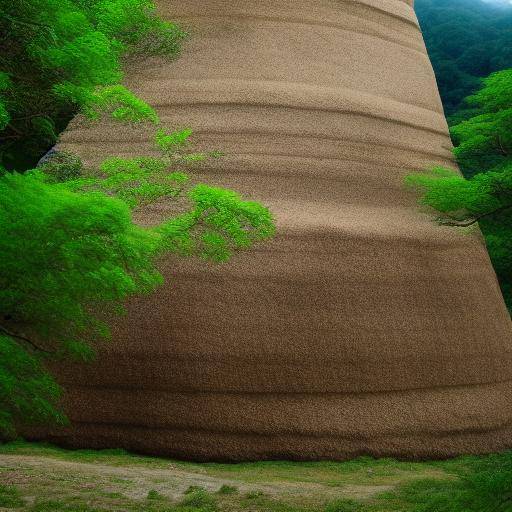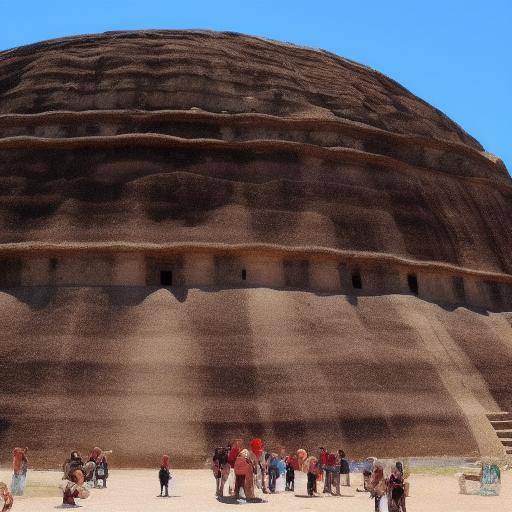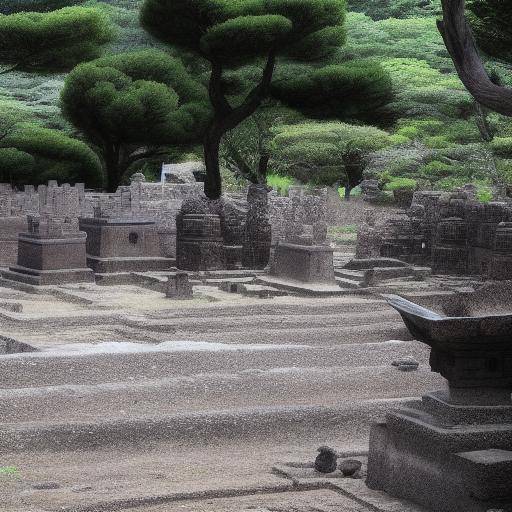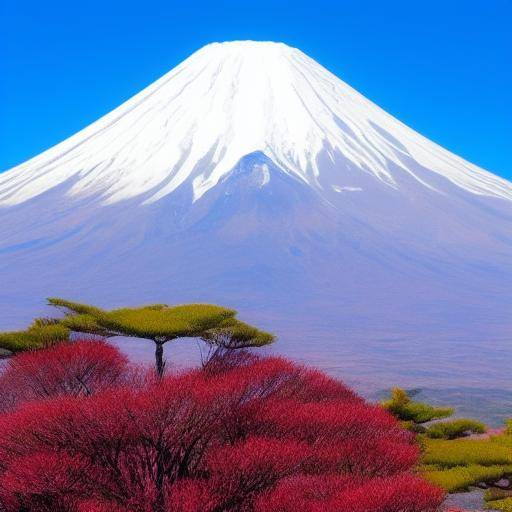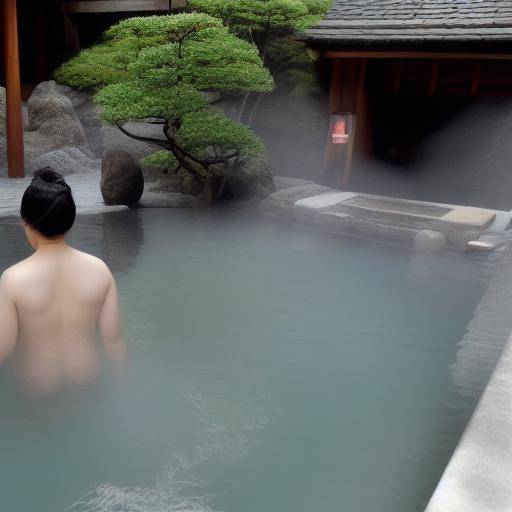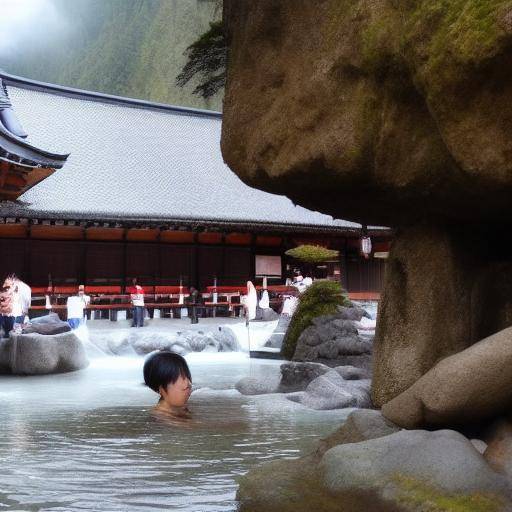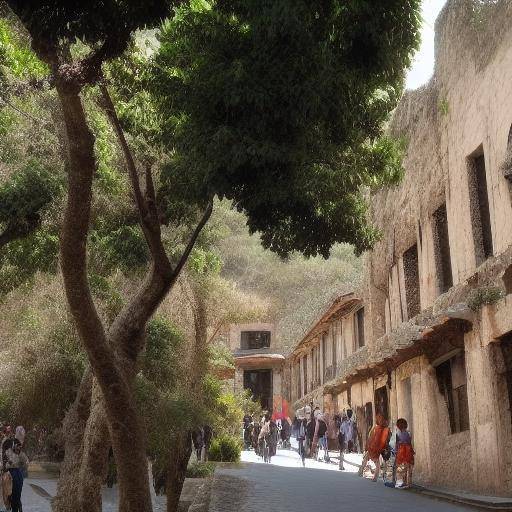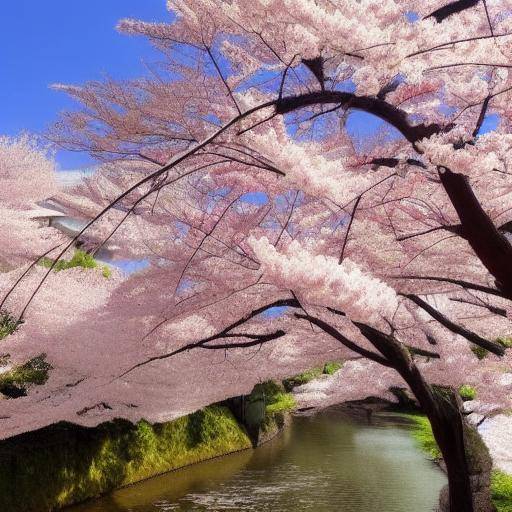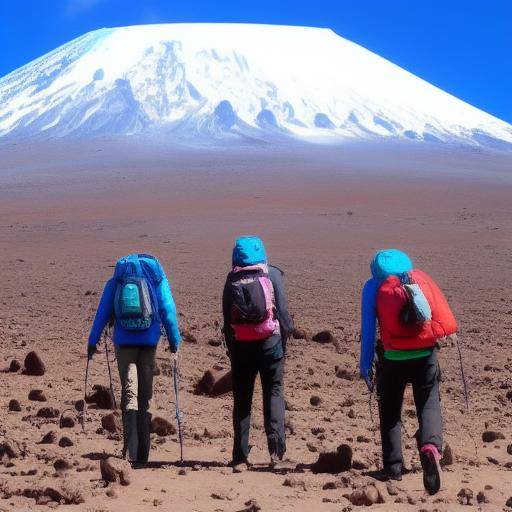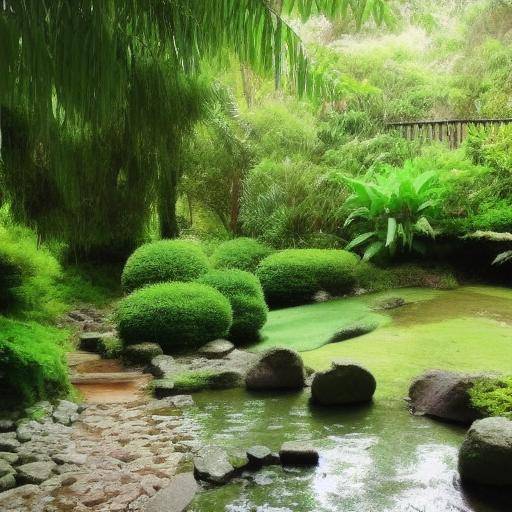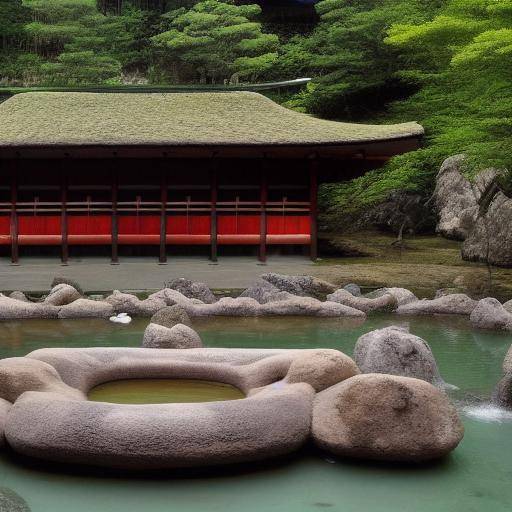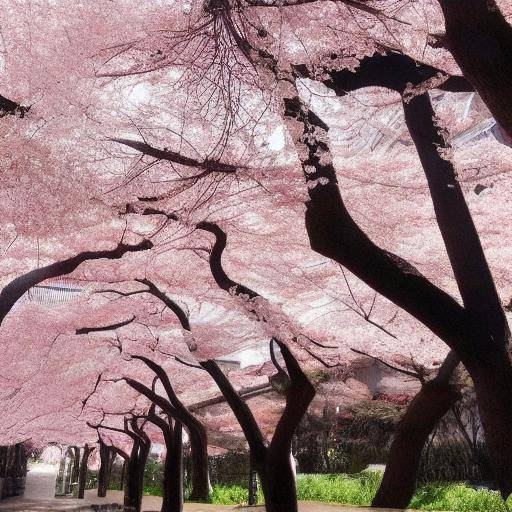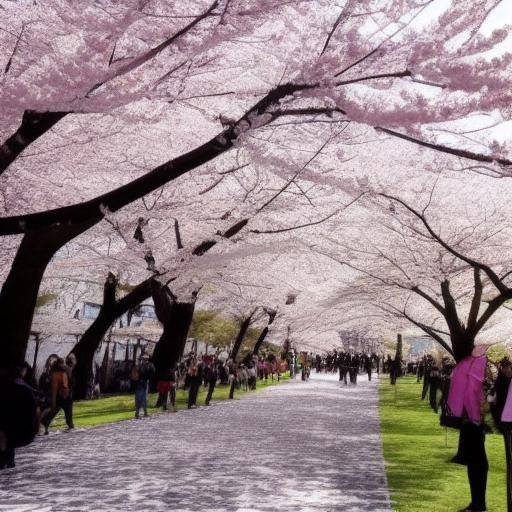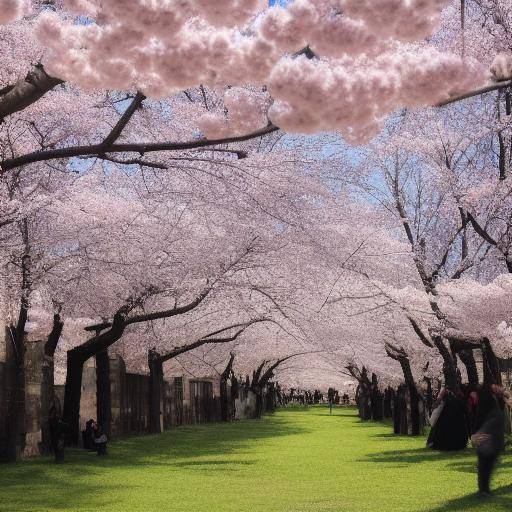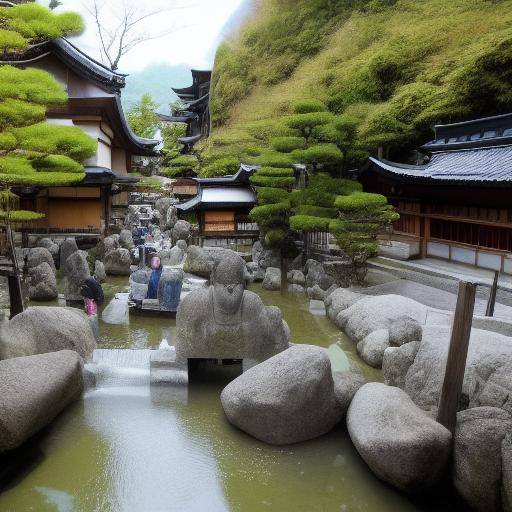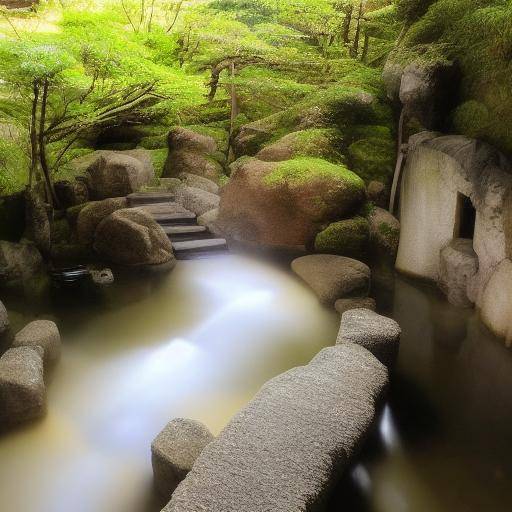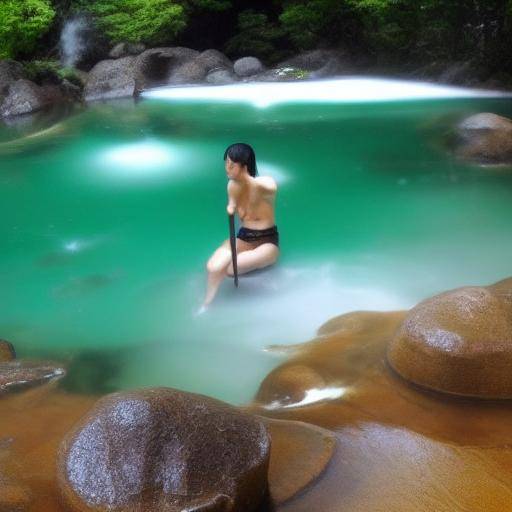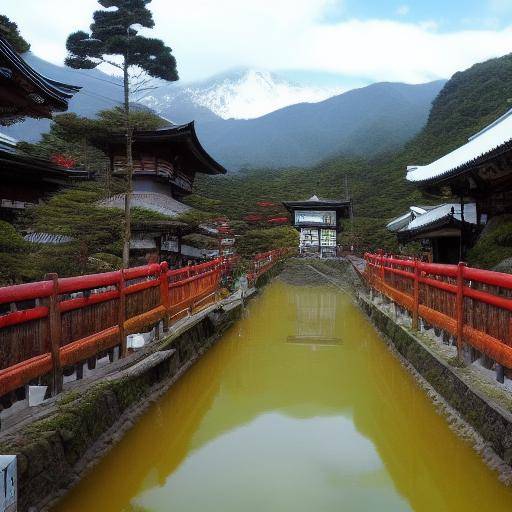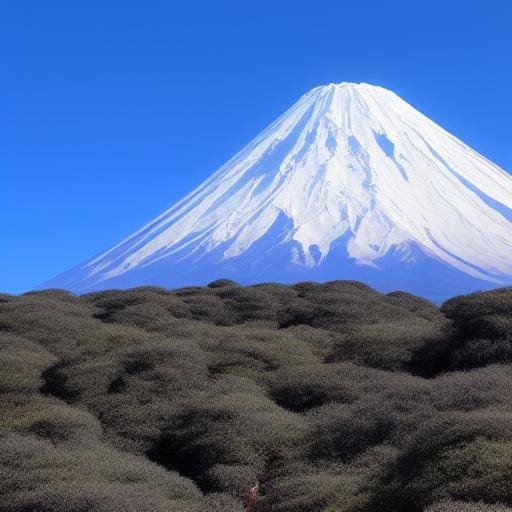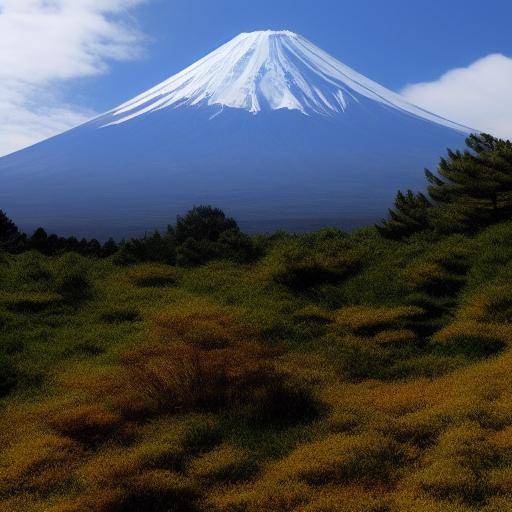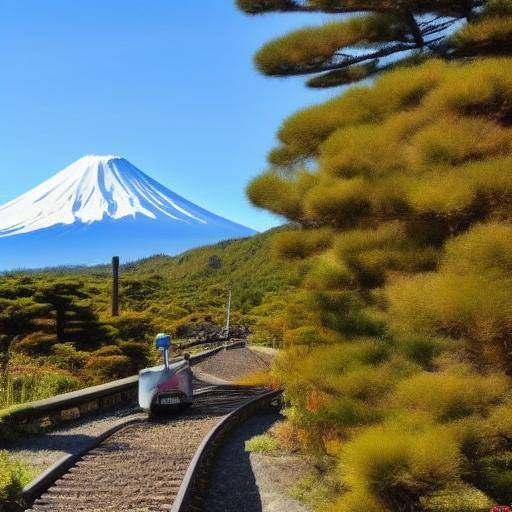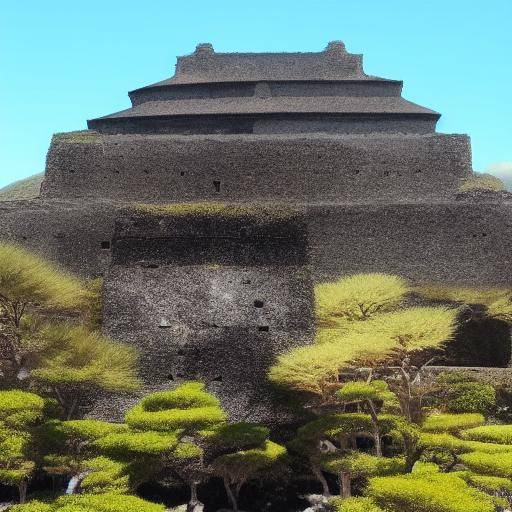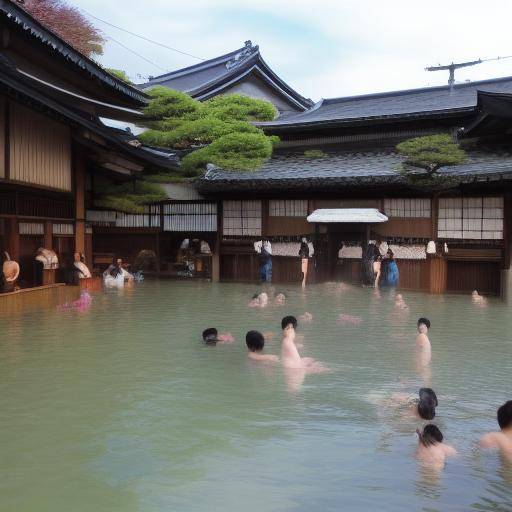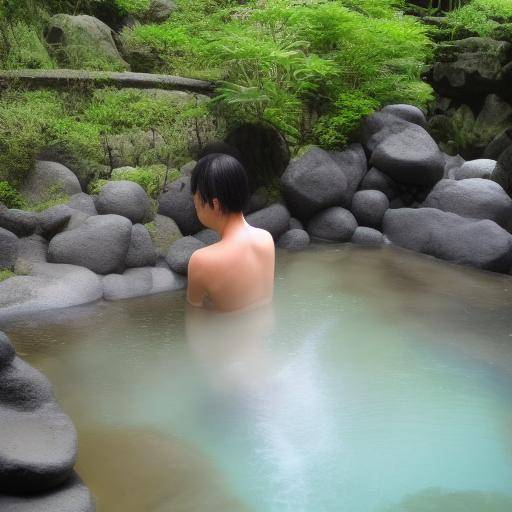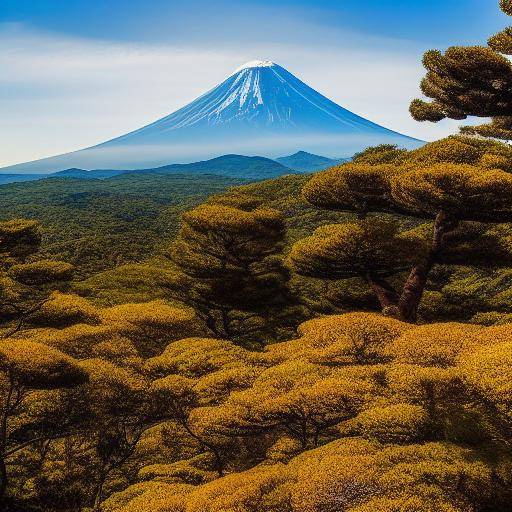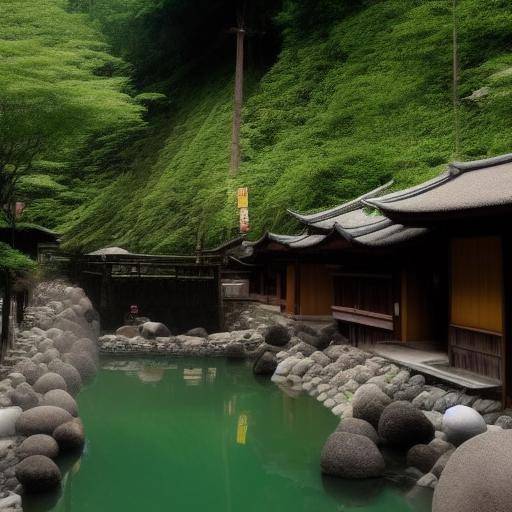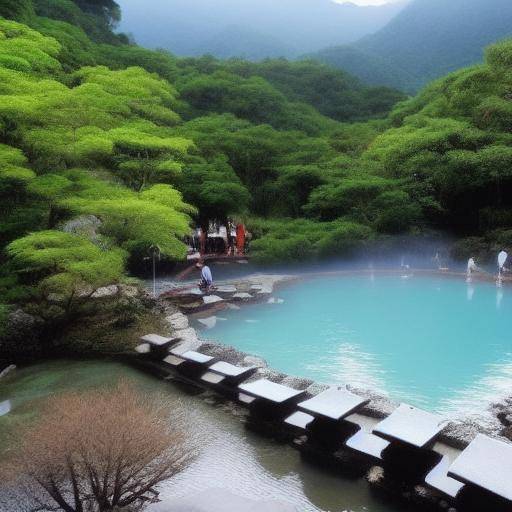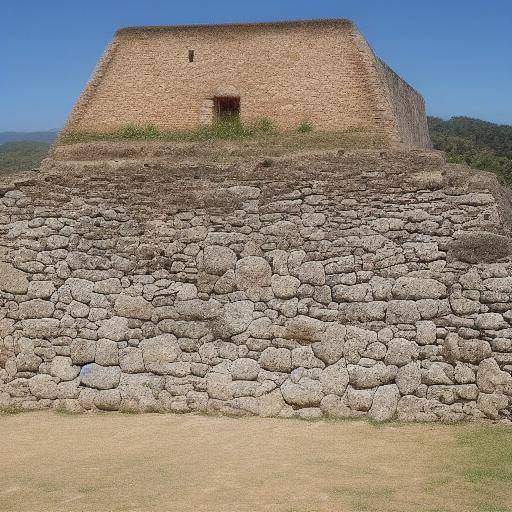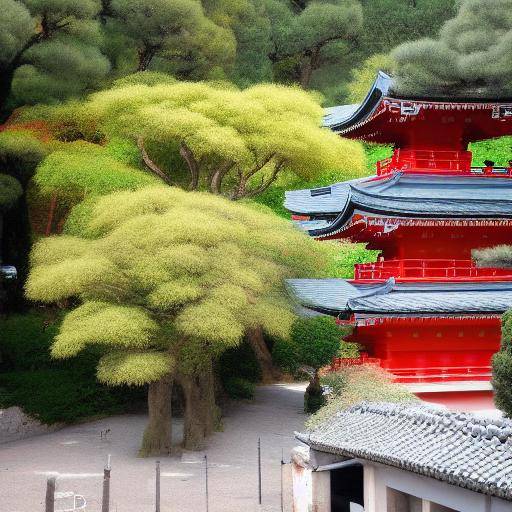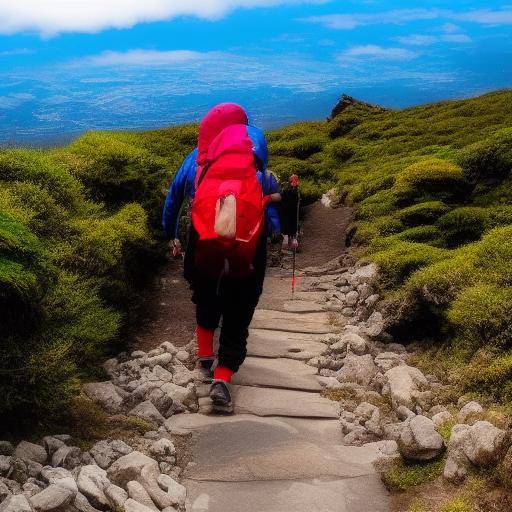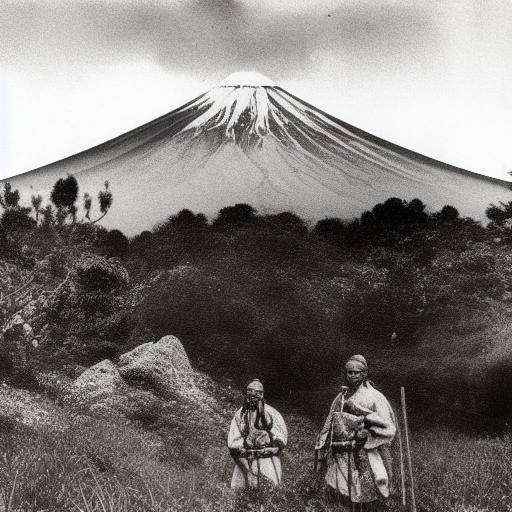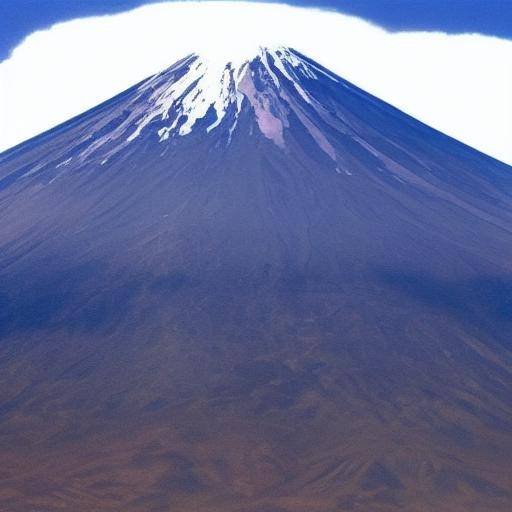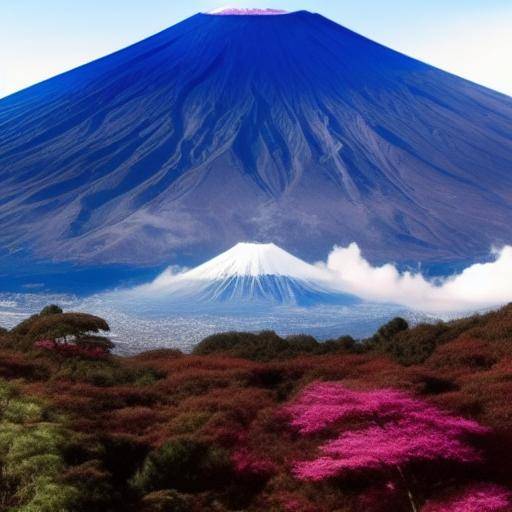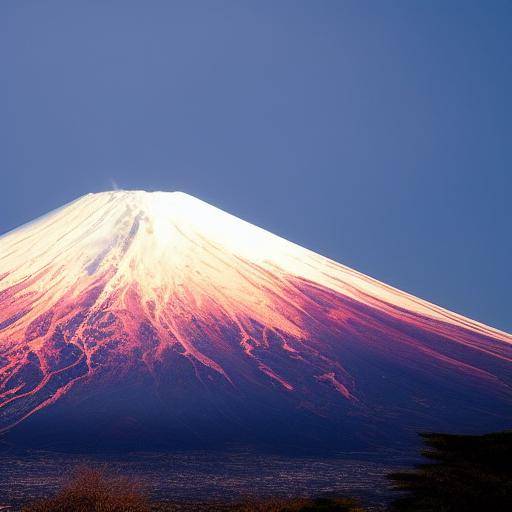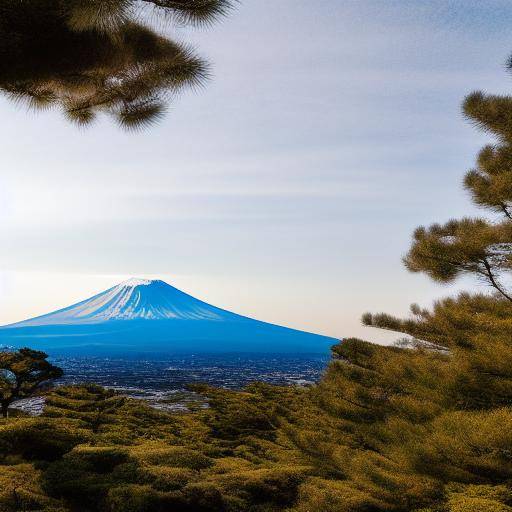
Introduction: Discover the majesty of Mount Fuji
Mount Fuji, or Fujisan in Japanese, is an icon of Japanese culture and one of the most famous mountains in the world. Located on the island of Honshu, Mount Fuji is an essential destination for hiking and nature lovers. In this article, we invite you to explore the secrets and wonders that this majestic volcano offers to those who venture to discover it. From its millennial history to the unique experiences it brings to visitors, immerse yourself in a journey that will reveal the greatness of Mount Fuji, the unique landscapes of Japan and the excitement of mountaineering.
History and Background of Mount Fuji
Mount Fuji, with its imposing silhouette, has been a source of inspiration and veneration in Japanese culture for centuries. Considered a sacred place, Mount Fuji has been portrayed in numerous works of art and literature, becoming a symbol of beauty and spirituality. With an ancient history dating back to ancient times, this majestic volcano has witnessed countless significant events over the centuries. From its geological formation to its role in Japanese mythology, Mount Fuji has left an indelible mark on the history and traditions of the country of the rising sun.
Mount Fuji in Japanese Culture
Mount Fuji is a cultural icon of Japan, and its impact goes beyond its imposing physical presence. It has been a source of inspiration for artists, poets and philosophers, embodied in numerous works of art, songs and poetry. Its role in Japanese culture is so relevant that it was designated a World Heritage Site by UNESCO in 2013, in recognition of its historical and spiritual importance.
Mythology and Folklore
According to Japanese mythology, Mount Fuji is linked to numerous legends and beliefs. The mountain is considered a sacred place and is associated with the sun goddess, Amaterasu. His crater is seen as a space where the divine and the human unite, creating a mystical atmosphere that attracts pilgrims and visitors in search of transcendental experiences.
Geological Evolution
Mount Fuji is an active stratevolcano that was formed over thousands of years due to tectonic activity in the region. Their progressive evolution has left unique geological footprints, which have awakened the curiosity of scientists and geologists alike. The geological wealth of Mount Fuji is a testimony to the dynamic nature of the planet and a reminder of the importance of its preservation.
Historical and Cultural Impact
Throughout history, Mount Fuji has witnessed and staged historic and cultural events that have shaped Japan's identity. From traditional festivals to the influence on architecture and design, the presence of Mount Fuji has left a deep mark on Japanese society, enriching its cultural heritage.
Challenges and Opportunities of Montañismo on Mount Fuji
Hiking on Mount Fuji is a challenging and rewarding experience. This majestic mountain offers hikers the opportunity to enjoy stunning landscapes, but also presents physical and logistical challenges that require careful preparation and respect for nature.
Physical and Environmental Challenges
Mount Fuji, with its more than 3,700 meters high, presents significant physical challenges for those who decide to climb their slopes. The altitude, unpredictable weather conditions and the variability of the terrain make the climbing demanding, requiring resistance, determination and caution on the part of the mountaineers. The realization of a safe ascension requires good physical condition, as well as adequate equipment to deal with difficult conditions.
Environmental considerations
Mount Fuji is a natural sanctuary that deserves to be treated with maximum respect and care. The massive influx of visitors during the climbing season poses sustainability challenges, such as waste management, ecosystem conservation and protection of local flora and fauna. Environmental awareness and commitment to sustainable practices are key to preserving the beauty and ecological balance of Mount Fuji.
Unique and Reward Experiences
Despite the challenges it presents, climbing Mount Fuji offers adventurers the opportunity to contemplate spectacular panoramic views, live moments of introspection and experience the majesty of nature in its purest state. To reach the summit of Mount Fuji is a reward that goes beyond the mere physical conquest, offering a deep connection with the natural environment and the gratification of having overcome personal challenges.
Current Trends in Montañismo
Mountaineering on Mount Fuji has undergone significant changes in recent decades, influenced by factors such as increased tourism, technological advances and environmental concerns. The emergence of new routes, guide services and technology for the safety of hikers has transformed the experience of climbing, opening up new possibilities and challenges for mountain lovers.
Practical Tips for Scaling Mount Fuji
Physical and Mental Preparation
Before embarking on the climbing of Mount Fuji, it is essential to prepare physically and mentally. Cardiovascular and resistance training is recommended to strengthen the physical condition, as well as psychological preparation to meet the challenges of ascension.
Equipment and clothing
Having the right equipment is essential to ensure a safe and comfortable experience on Mount Fuji. Appropriate clothing should be worn for varied temperatures, resistant footwear, flashlights, trekking sticks, as well as water and energy food supplies.
Planning and Reserves
It is important to plan in advance the climb, including the reservation of accommodation in the mountain huts, the choice of the climbing and descent route, as well as the verification of the weather and the routes.
Respect for the Environment
By enjoying the nature of Mount Fuji, it is crucial to respect the ecological balance of the environment. This implies collecting and carrying with it the wastes generated during the activity, as well as respecting the indications and regulations established for the conservation of the area.
Connection with Local Community
Interacting with the local community and other hikers is an enriching way to live the Monte Fuji experience. Knowing local customs and traditions, as well as sharing experiences with other adventurers, adds a human and cultural value to the journey.
Looking Towards the Future: Trends and Perspectives of Montañismo on Mount Fuji
Innovations in the Experience of Escalada
Mountaineering on Mount Fuji is experiencing an innovation boost, with the introduction of advanced technologies to improve the safety and comfort of hikers. From climate monitoring systems to emergency devices, innovations are transforming the way people enjoy the mountain.
Sustainability and Conservation
Sustainability has become a key focus for preserving Mount Fuji and its surroundings. Conservation initiatives, waste management policies and environmental education programs seek to ensure that future generations can enjoy the natural beauty of Mount Fuji in a sustainable way.
Impact of Tourism
Tourism growth in the Monte Fuji region has raised issues about the balance between the preservation of the natural environment and the satisfaction of tourist demand. Strategies are being developed to manage the flow of visitors responsibly, while protecting the natural and cultural heritage of the area.
Reflection and Cultural Valuation
The climbing of Mount Fuji is not only a physical activity, but also an opportunity to reflect on the relationship between humanity and nature, as well as to appreciate the cultural heritage surrounding this iconic mountain. As the mountain approach evolves, emphasis is placed on assessing its cultural and historical significance.
Conclusion
Mount Fuji offers a unique experience that combines natural grandeur, rich cultural history and the exciting challenges of mountaineering. From its role in Japanese mythology to contemporary advances in climbing experience, Mount Fuji continues to captivate those who explore it. With proper preparation and deep respect for nature, Mount Fuji's climb promises to reward adventurers with spectacular views and a unique connection with one of Japan's most impressive natural treasures.
Frequently asked questions
What is the best time to climb Mount Fuji?
The climbing season of Mount Fuji usually goes from July to September, when weather conditions are more favorable. However, it is essential to review weather forecasts and consider other factors, such as the influx of visitors, when planning the escalation.
What are the most popular climbing routes on Mount Fuji?
The most popular climbing routes on Mount Fuji are Yoshida, Subashiri, Gotemba and Fujinomiya routes. Each route offers unique and different panoramic experiences, so the choice will depend on the preferences and level of climbers.
Do you need special permission or guide to climb Mount Fuji?
No special permission is required to climb Mount Fuji, but it is mandatory to register before starting the climb. As for hiring a guide, although it is not mandatory, it can be recommended, especially for those who have no experience in mountaineering.
What is the altitude and difficulty of climbing to Mount Fuji?
The maximum altitude of Mount Fuji is approximately 3,776 meters, making it a challenge for mountaineers, especially those who are not used to altitude. The difficulty of climbing varies according to the physical condition and experience of the climber.
What security measures should be taken into account when climbing Mount Fuji?
It is essential to follow the warnings and security councils provided by local authorities. Carrying with it an appropriate security team, respecting regulations and being attentive to climate conditions are key practices for a safe climbing.
What is the cultural and spiritual significance of Mount Fuji for the Japanese?
Mount Fuji occupies a special place in Japanese culture, being regarded as a symbol of beauty, spirituality and strength. His presence has influenced Japanese literature, art and traditions, becoming a reference point of national identity and connection with the transcendental.
Recommended External Sources
- Official Website of Tourism in Japan
- National Geographic - Mount Fuji: Between Earth and Heaven
- UNESCO World Heritage Centre - Monte Fuji, World Heritage Site
Mount Fuji represents an amalgam of history, culture and natural challenges that make it an essential destination for mountain enthusiasts and nature lovers. Through this guide, we have explored the secrets of this iconic mountain, as well as the wealth of experiences that await those who decide to embark on the exciting journey to its summit. Mount Fuji is much more than a mountain; it is a testament to the connection between humanity and nature, a place where natural grandeur and rich cultural history intertwine to create a truly unforgettable experience.
With this guide, we hope to have provided a detailed and enveloping view of Mount Fuji, offering both practical information and a deeper appreciation of its meaning. Whether you're planning to climb the Fuji-san or simply wanting to know more about this natural treasure, Mount Fuji will always offer an experience that will last in the hearts and minds of those who visit it.
Adventure on Mount Fuji and discover its secrets!

